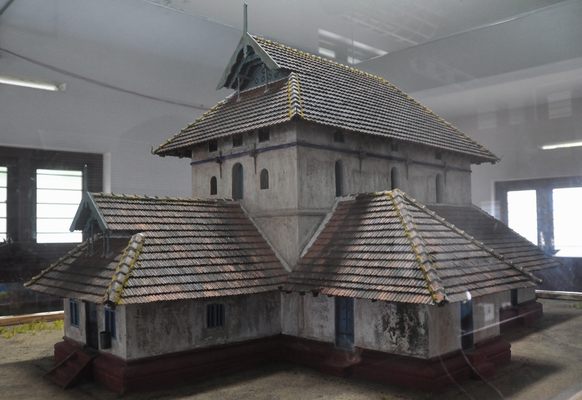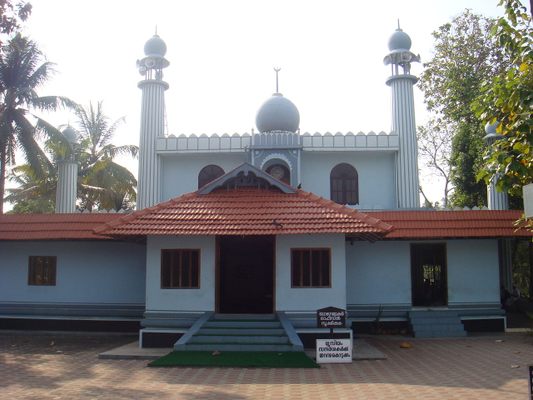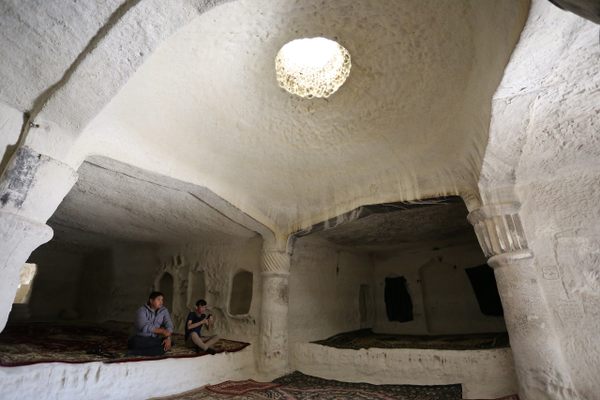About
Where is the oldest surviving mosque in South Asia? You may guess it to be somewhere in western Pakistan, perhaps in Sindh, which is known as Bab-ul Islam (the Gate of Islam), since it is where Arab armies first introduced the religion. Or perhaps you may guess it to be further west in the deserts of Baluchistan, which the Arabs would have passed through first. If that was indeed your guess, it is off by over 2,500 kilometers, since it is to be found in a place where Islam arrived with Arab traders, during the lifetime of Prophet Muhammad himself.
Cheraman Juma Masjid sits along a calm semi-rural road, with no indication of its great antiquity. At first glance, you may find it unusual, since it does not resemble the typical idea of a mosque, with domes and minarets. Rather, it looks no more than a tharavad (a traditional house that can be found throughout Kerala), with its tiled roof and ornate wooden doors. But once you go inside, you find a qibla pointing towards Mecca, and prayer mats, like many other mosques, although another unusual feature is the hanging lamps, which are part of traditional Kerala house and temple architecture. One of the lamps is said to have burnt for 1,000 years without going out, fueled by oil brought by worshippers.
The place is named after Cheraman Perumal, a king of the Chera dynasty which once held sway over coastal Kerala. The popular oral tradition goes that the king witnessed the splitting of the moon, which is an event described in the Qur'an. His court astrologers had no idea what it meant, and the king began to obsess over what may have caused it. When some Arab traders came to his court, it was eventually revealed that it was caused by the prophet Muhammad, who was propagating the new religion of Islam. Hearing this, the king left for Mecca to meet the prophet, accepted Islam while there, but died on the journey back. However, he sent Malik ibn Dinar, a Persian convert, to his kingdom with a letter telling the new king to build a mosque, which was the original version of this building.
Over its long history, it saw several renovations and reconstructions, the most notable one being in 1504, after the Portuguese admiral Lopo Soares de Albergaria razed it to the ground. In 1984, some extensions were added which made the building look like a modern mosque, although renovation work that started in 2020 has seen them removed as the structure has been restored to its original state.
The mosque is open to all, and you'll very likely find friendly locals who would be glad to tell you the story behind the place and guide you. It is still a functioning place of worship, and as such is often buzzing with activity.
Related Tags
Know Before You Go
Kodungallur, where the mosque is located, is a 45-kilometer drive from Kochi, the largest city in Kerala, where there is an international airport. It is also 40 kilometers from Thrissur, another major city. It is easily accessible as a day trip from Kochi or Thrissur, and can be reached by renting a car, taking a KSRTC bus or taking a taxi.
The surrounding area is part of the Muziris Heritage Project and has several historic sites to visit.
Delhi and Rajasthan: Colors of India
Discover Colorful Rajasthan: From Delhi to Jaipur and Beyond.
Book NowCommunity Contributors
Added By
Published
July 12, 2022

























